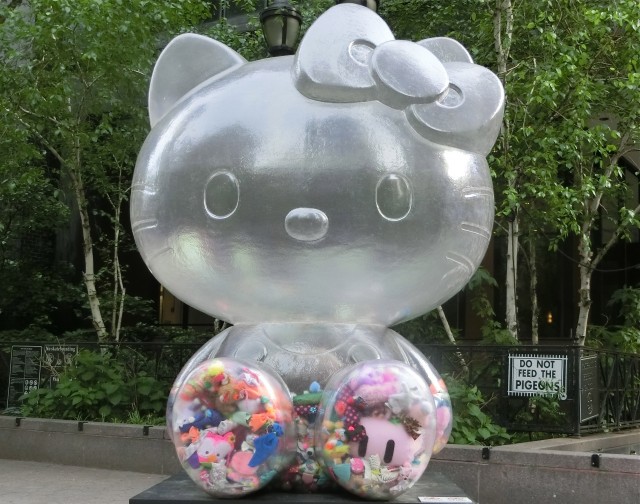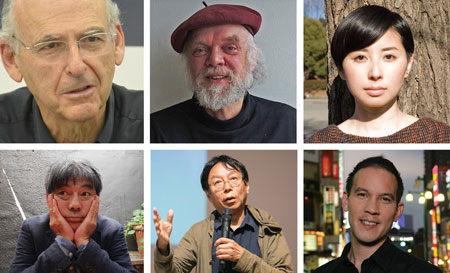Japan Society
333 East 47th St. at First Ave.
Friday, September 18, and Saturday, September 19, $40, 7:30
212-715-1258
www.japansociety.org
As part of its 2015-16 performing arts season, Japan Society is celebrating the history of culture of Okinawa, located in the Ryukyu island chain south of mainland Japan, with the three-month series “Okinawan Vibes.” The festival begins September 18-19 with “Traditional Dance from Okinawa, with Live Music,” copresented with Yokohama Noh Theater. The event features dancers Satoru Arakaki, Sayuri Chibana, Izumi Higa, Kota Kawamitsu, Sonoyo Noha, Yoshikazu Sanabe, and Ayano Yamashiro and musicians Shingo Nakamine, Kazuki Tamashiro, Hiroya Yokome, Hokuto Ikema, Hideo Miyagi, Natsuko Morita, and Satoshi Higa from Okinawa Prefectural University of Arts performing a quartet of court and folk dances from during and immediately after the Ryukyu Kingdom (fifteenth to nineteenth centuries), including the women’s dance onna odori, the masked classical dance shundo, and folk dances known as zo odori; the dancers will be wearing such extravagantly colored costumes as the bingata, the hanagasa, and kasuri kimonos, while the musicians will be playing the taiko, the koto, the sanshin, the kokyu, and the fue. Each evening will be preceded by a lecture led by Dr. James Rhys Edwards and will be followed by a meet-the-artists reception. In addition, Japan Society is hosting an Okinawan dance and music workshop on September 19 ($45, 4:00), in which participants will learn about the karaya dance and sanshin and see an onnagata demonstration. “Okinawan Vibes” continues with Go Takamine’s rarely shown Paradise View on October 2, “Obake Family Day: Experience Japan’s Ghosts & Goblins” on November 1, “Explore Okinawa: Art, Culture, and Cuisine from the Ryukyu Islands” on November 3, the lecture “Okinawa, the Birthplace of Karate” on November 7, and the workshop “Creating Bingata, Okinawa’s Vibrant Textile” on November 8.

 Shingo Wakagi’s Asleep is a quiet gem of a film, a poignant drama about three women’s relationship with beds and sleep. Sakura Ando stars as Terako, a young woman who is sleeping most of her life away. The only time she wakes up and gets out of bed is when her married lover, the somewhat older Mr. Iwanaga (Arata Iura), calls her to make a date. Terako’s best friend and former roommate, Shiori (Mitsuki Tanimura), recently committed suicide shortly after complaining about the difficulties of her job as a soineya, providing companionship — but not sex — by lying in bed with strangers who do not want to sleep alone. And Terako soon discovers that Iwanaga’s wife is languishing in a hospital bed in a deep coma. As Terako cares more and more for Iwanaga, she finds it harder and harder to get out from under the covers, trying to hide from a life surrounded by loneliness and death.
Shingo Wakagi’s Asleep is a quiet gem of a film, a poignant drama about three women’s relationship with beds and sleep. Sakura Ando stars as Terako, a young woman who is sleeping most of her life away. The only time she wakes up and gets out of bed is when her married lover, the somewhat older Mr. Iwanaga (Arata Iura), calls her to make a date. Terako’s best friend and former roommate, Shiori (Mitsuki Tanimura), recently committed suicide shortly after complaining about the difficulties of her job as a soineya, providing companionship — but not sex — by lying in bed with strangers who do not want to sleep alone. And Terako soon discovers that Iwanaga’s wife is languishing in a hospital bed in a deep coma. As Terako cares more and more for Iwanaga, she finds it harder and harder to get out from under the covers, trying to hide from a life surrounded by loneliness and death.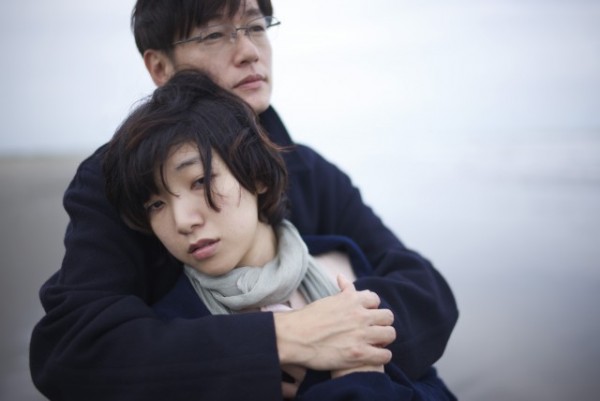
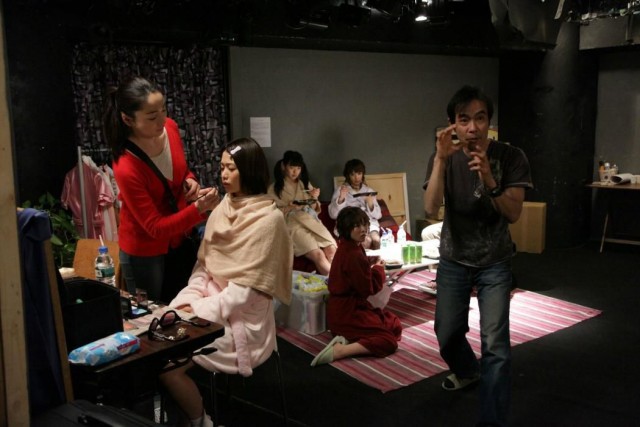
 Former porn director Kei Morikawa’s Makeup Room is a charming love letter to the industry for which he purportedly made more than one thousand films. Originally written for the stage, the highly theatrical tale takes place in one darkly lit room over the course of several hours, as five actresses, including adult video veterans, get their makeup done, change wardrobe, eat, study the script, and talk about work and life in between scenes of the film they are making, Deep Heat, which is being shot off-camera in the same building, “an epic porn on a tiny budget.” Aki Morita stars as Kyoko, an experienced makeup artist who serves as a kind of den mother to Sugar Sato (Mariko Sumiyoshi), Kirisaki (Kanami Osako) Masami Ayase (Beni Ito), Masako (Nanami Kawakami), and Matsuko (Lily Kuribayashi), who all bring their own issues to the engaging dramedy, from worrying about how their newly done nails will affect a lesbian scene to discussing how their boyfriends and family react to their chosen career. None of them fit it into the stereotype of abused, drug-addicted, desperate women who have turned to porn because they have run out of options; to them, it is just a job, like any other. And Makeup Room never gets lewd or mundane; in fact, in many ways it could be about any five women who will be working together, except this group tends to take their clothes off and shower much more often and ask questions like “Why is she a star and me only a fetish actress?”
Former porn director Kei Morikawa’s Makeup Room is a charming love letter to the industry for which he purportedly made more than one thousand films. Originally written for the stage, the highly theatrical tale takes place in one darkly lit room over the course of several hours, as five actresses, including adult video veterans, get their makeup done, change wardrobe, eat, study the script, and talk about work and life in between scenes of the film they are making, Deep Heat, which is being shot off-camera in the same building, “an epic porn on a tiny budget.” Aki Morita stars as Kyoko, an experienced makeup artist who serves as a kind of den mother to Sugar Sato (Mariko Sumiyoshi), Kirisaki (Kanami Osako) Masami Ayase (Beni Ito), Masako (Nanami Kawakami), and Matsuko (Lily Kuribayashi), who all bring their own issues to the engaging dramedy, from worrying about how their newly done nails will affect a lesbian scene to discussing how their boyfriends and family react to their chosen career. None of them fit it into the stereotype of abused, drug-addicted, desperate women who have turned to porn because they have run out of options; to them, it is just a job, like any other. And Makeup Room never gets lewd or mundane; in fact, in many ways it could be about any five women who will be working together, except this group tends to take their clothes off and shower much more often and ask questions like “Why is she a star and me only a fetish actress?”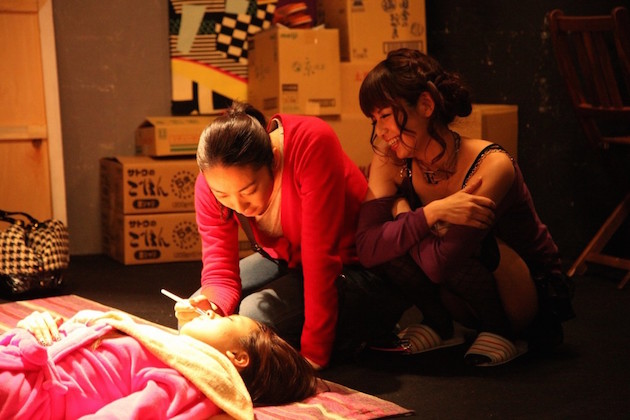
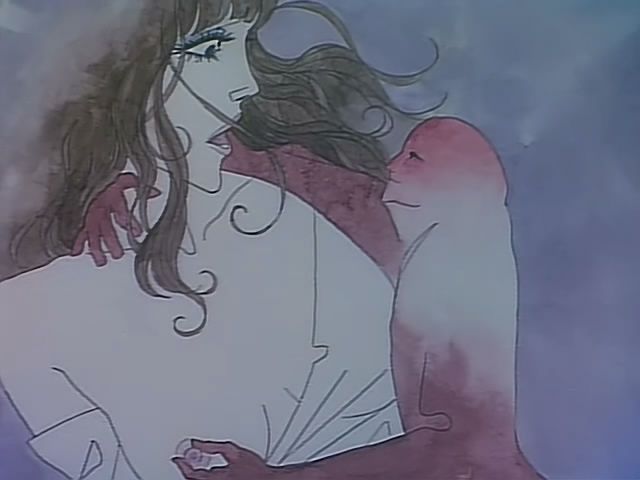
 The third film in Mushi Production’s adult Animerama trilogy, following A Thousand & One Nights and Cleopatra, a pair of collaborations between manga godfather Osamu Tezuka and Eiichi Yamamoto, Belladonna of Sadness is a gorgeously made grown-up fairy tale, a deeply moving erotic story about love and power, loyalty and revenge. Based on Jules Michelet 1862 book Satanism and Witchcraft, also known as La Sorcière, the film follows the misfortunes of Jeanne (voiced by Aiko Nagayama) and Jean (Katsutaka Ito), a couple “drunk on happiness” who present their marriage to the local lord (Masaya Takahashi), a harsh ruler — his evil elegantly expressed by his skeletal head. When Jean and Jeanne are unable to pay the absurdly high tax demanded by the lord, his evil wife (Shigaku Shimegi) decides that the lord and his court will have their way with the virgin Jeanne, then return the spent woman to Jean. Jeanne is raped by the lord in a harrowing, psychedelic, blood-soaked sequence and comes back home with an overwhelming melancholy. As Jean tries to deal with the horrible situation, Jeanne is visited by a small, red, phallus-shaped spirit (Tatsuya Nakadai) who claims to be part of her. “Your soul was screaming, ‘I want power. Someone help me,’” the strange creature says. But every time Jean and Jeanne start to put their life back together, terrible things happen to them, and it gets worse when the town believes that she might be in league with the devil.
The third film in Mushi Production’s adult Animerama trilogy, following A Thousand & One Nights and Cleopatra, a pair of collaborations between manga godfather Osamu Tezuka and Eiichi Yamamoto, Belladonna of Sadness is a gorgeously made grown-up fairy tale, a deeply moving erotic story about love and power, loyalty and revenge. Based on Jules Michelet 1862 book Satanism and Witchcraft, also known as La Sorcière, the film follows the misfortunes of Jeanne (voiced by Aiko Nagayama) and Jean (Katsutaka Ito), a couple “drunk on happiness” who present their marriage to the local lord (Masaya Takahashi), a harsh ruler — his evil elegantly expressed by his skeletal head. When Jean and Jeanne are unable to pay the absurdly high tax demanded by the lord, his evil wife (Shigaku Shimegi) decides that the lord and his court will have their way with the virgin Jeanne, then return the spent woman to Jean. Jeanne is raped by the lord in a harrowing, psychedelic, blood-soaked sequence and comes back home with an overwhelming melancholy. As Jean tries to deal with the horrible situation, Jeanne is visited by a small, red, phallus-shaped spirit (Tatsuya Nakadai) who claims to be part of her. “Your soul was screaming, ‘I want power. Someone help me,’” the strange creature says. But every time Jean and Jeanne start to put their life back together, terrible things happen to them, and it gets worse when the town believes that she might be in league with the devil.